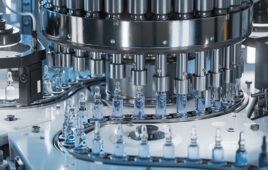
White pills close-up on a blue-white background. close-up, pharmacovigilance, safety quality control
The ever-growing volume of data from clinical trials, drug use and other sources presents both opportunities and challenges for pharmacovigilance. COVID-19 has presented an array of possibilities for pharmacovigilance service providers. Detecting and evaluating potential safety signals is essential to maintain the safety of drugs and other therapeutic products.
Companies are constantly challenged to keep costs down to optimize their investment, focus on patient safety and undertake benefit/risk analysis of products. The hard truth is that pharmacovigilance is an additional cost that doesn’t draw revenue but is an essential requirement to do business. The pharmaceutical industry has learned that pharmacovigilance is more than a business necessity. Pharmacovigilance can be an asset as it can inform discovery, competitive differentiation and protocol design.
As the industry commercialized COVID-19 vaccines and other new treatments at record speed, pharmaceutical companies are subject to handling spikes in adverse event reports. According to findings of Ernst & Young, large pharma companies have to accommodate an average of 700,000 adverse events a year. In addition, IDC estimates that caseloads are increasing by 30–50% each year, mainly due to the arrival of COVID-19 vaccines.
The number of ways of reporting adverse events has spiraled, and thus companies today have an appetite for increased data on drug safety than ever before. With the surge in adverse events, it’s critical to have a framework that can provide quick, high-quality insights to drive the industry forward. As a result, a leading market research company reports that the pharmacovigilance market is estimated to grow at a CAGR of 8.8% from 2021 to 2028.
How COVID-19 inspired innovation in pharmacovigilance
The pharmaceutical industry is turning to newer technologies to handle the deluge of safety reports and improve general efficiencies with adverse reporting. In particular, machine learning and natural language processing are proving popular. During the pandemic’s peak, healthcare providers, pharmaceutical experts and virologists struggled to understand the nature of the novel coronavirus and its variants. At that time, no specified treatment for SARS-CoV-2 infections existed. Government bodies were fighting to procure a steady supply of hydroxychloroquine. And vaccine trials were far from receiving emergency regulatory approval. The chaos was concerning as the efficacy of over-the-counter antiviral drugs was far from known when automation in pharmacovigilance came to the rescue.
Amid the COVID-19 pandemic, technological advancements in pharmacovigilance, such as automation, artificial intelligence and Big Data analytics, have driven companies’ efficiency in providing pharmacovigilance services. Using AI and ML, pharmacovigilance automation is reshaping time-intensive manual tasks like data compilation and obtaining information for regulatory approval.
By definition, a well-designed, automated system using the right technology can assist in eliminating tedious and repetitive tasks, reduce data entry and even provide alert signaling. In fact, according to findings of Ernst & Young, companies could lower their pharmacovigilance costs by nearly 45% by adopting automation.
Big data analytics instruments can help pharmacovigilance companies to screen large volumes of data to discover patterns and correlations that may point to a safety signal. However, all data gathered from multiple sources is not comparable. For example, clinical trial data is subject to information, selection, and observer biases, which can cumulatively lead to erroneous conclusions about a drug’s safety profile.
Benefits of automation in pharmacovigilance
Improved Employee Productivity: Human error can occur with the massive amounts of data generated and analyzed daily. PV automation can help reduce this and save time and resources. While automation in pharmacovigilance primarily centers on gaining process efficiency, freeing resources to perform value-added tasks is a more significant benefit.
Improved Patient Safety: Systems in place to monitor events and automatically run checks to determine the root cause of adverse events can detect errors in treatment and reduce patient safety risks.
Meeting stringent regulatory requirements: Automation of pharmacovigilance processes enables organizations to stay on top of pharmacovigilance regulations and maintain robust compliance.
An automated system allows real-time reporting and generates PV reports in minutes, helping minimize time spent writing reports.
Predicting risk/benefit
Such a system can also predict the risk/benefit of a drug. It can also respond quickly to alerts that can identify problems before they occur.

Shveta Garg
To give pharmaceutical companies increased presence – and reactivity to adverse drug events, allowing them to aim risk areas more effectively and respond readily when problems crop up.
To increase the quality of data analysis – automation of drug safety programs has the additional benefit of improved quality assurance, precision and consistency in testing cycles, and reduced pharmacovigilance costs. For example, a McKinsey study reports the potential of automating as much as 70% of PV-related tasks, the business value for which can be monetized within three years of implementation.
Shveta Garg is a senior content writer with experience of nearly a decade in content marketing. Shveta mainly writes in the areas of science and technology, consumer goods and energy. She has contributed to various science and technology news sites. She has focused on various developments in the field of science and technology. Shveta has traveled and lived the U.S., UK, France and India. She has a master’s in operational research from the University of Delhi. She lives in Pune with her family.
Filed Under: Drug Discovery and Development





Tell Us What You Think!
You must be logged in to post a comment.